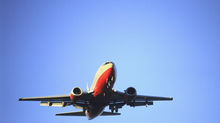Cloudy skies over Europe
Airlines are enjoying unprecedented profits
Airlines around the world are enjoying a profitable summer and the prospects for 2015 and 2016 look highly positive. This is due to airlines in North America having restructured costs multiple times over the past decade, while European airlines have only recently been improving costs (though some remain far behind). European and Asian airlines benefit from the rational nehaviour of their American and Canadian counterparts being rational with capacity and keeping costs low.
Profits hide structural cost problems
As airline profits are rolling in, there is a dark cloud over the horizon. Peeling back the profit improvements from lower fuel prices, underlying operating costs for many airlines around the world appear to continue to rise. This seems especially accute in Europe where strong labour environments, unions, works councils, and general laws present a particular challenge for managers trying to right size their businesses in the face of changing market economics and global competition.
Revenue is under pressure
Airlines are reporting improved fortunes, but this hides what is really going on underneath when ignoring the cost savings from the temporary (yes, temporary) fall in fuel prices.
Various macroeconomic factors including currency issues, a slowdown in the economies of Europe, Brazil, China, Canada and Australia and a strong US dollar are reducing global demand for air travel and placing yields under pressure. The issue is particuarly accute in Europe with large European carriers such as Lufthansa and Air France being heavily exposed to, particularly currency issues. British Airways is also exposed but less so than the others in its exposure to China and Japan, for example. These airlines do benefit from US denominated demand, but against a backdrop of US dollar fuel and aircraft costs, this is not a benefit, it is only not negative as revenues from other currencies.
Structural problems with large European airlines
Many of the larger European airlines have outdated business models. Excluding British Airways, easyJet and Ryanair, most of the larger European Airlines rely on carrying fifth freedom/connecting traffic through large hubs with limited home markets. Take Frankfurt, for example, with a population of under 1 million. It is home to Europe's largest airline, and is the largest transfer hub in Europe, carrying amongst others, a significant volume of traffic daily across the Atlantic to/from the Middle East and the Indian Subcontinent.
As aircraft technologies have improved and as economies to the near east have strengthened, there is no longer a limitation which requires hubbing so far west in Europe in places such as London, Paris, Amsterdam, Frankfurt, Munich, Zurich or even Lisbon in order cross the Atlantic. Traffic from the Indian Subcontinent, for example, can now fly non-stop to North America from Delhi aboard efficient aircraft such as the Boeing 787-9 and A350-900 (This was previously possible with the 777-200LR and A340-500, but economics of the new generation aircraft are far superior, making these routes more viable). And where traffic flows are too small to necessitate non-stop services, hubs such as Istanbul, Dubai, Abu Dhabi and Doha are now more viable since they are within a short enough range to these regions to allow for high frequency and even narrow-body operations, connecting one-stop across the Atlantic - making them more viable than two stopping through hubs in India and Europe.
The main complaint these large European airlines have is that the gulf carriers are relying on this connecting volume. But these European airlines do the same. What they are really complaining about is that they have lost control of their costs and are envious of airlines which are able to leapfrog the congested and expensive European airports to connect traffic either non-stop or one-stop where it would otherwise have to one-stop or two-stop via Europe.
The verdict
The large European airlines have no choice. They need to retrench, rationalize, regroup, resize and reformat. That means they need to pull back and shrink - yes shrink. They need to re-evaluate the markets where they can be competitive and they need to get their costs right. But they also need to rethink which market segments they are serving. Once this is done, they can come back out stronger and think again about growth. Let's not forget, Emirates did not achieve its scale and dominance overnight. It has taken a lot of hard work and rational behaviour to establish a strong base from which to them grow.
Air Canada, American, United and Delta have already done this. They shrank in the mid-late 2000s and some have continued to shrink. They reorganzied their businesss, cut their costs and re-emerged stronger. This was not just because of Chapter 11 style restructuring, it was much more. They got their business models right, abandoned the past errors such as democratizing and commoditizing air travel. They recognized there are segments of the market which will want and which will look for Southwest and Spirit, but these are not the exclusive market segments. British Airways took longer to figure this out, but eventually it stopped chasing easyJet and Ryanair and it moved back upmarket to its core customer base and is now growing with a stronger market position than any othr large European network carrier. Lufthansa and Air France seem to have a long way to go. There are a lot of lessons to be learned from the Americans and BA. But it seems at least Lufthansa believes it can get it right where so many others have failed. First it banked on germanwings, and now it places its hopes on Eurowings, all the while its main business continues to suffer from rising costs.






















